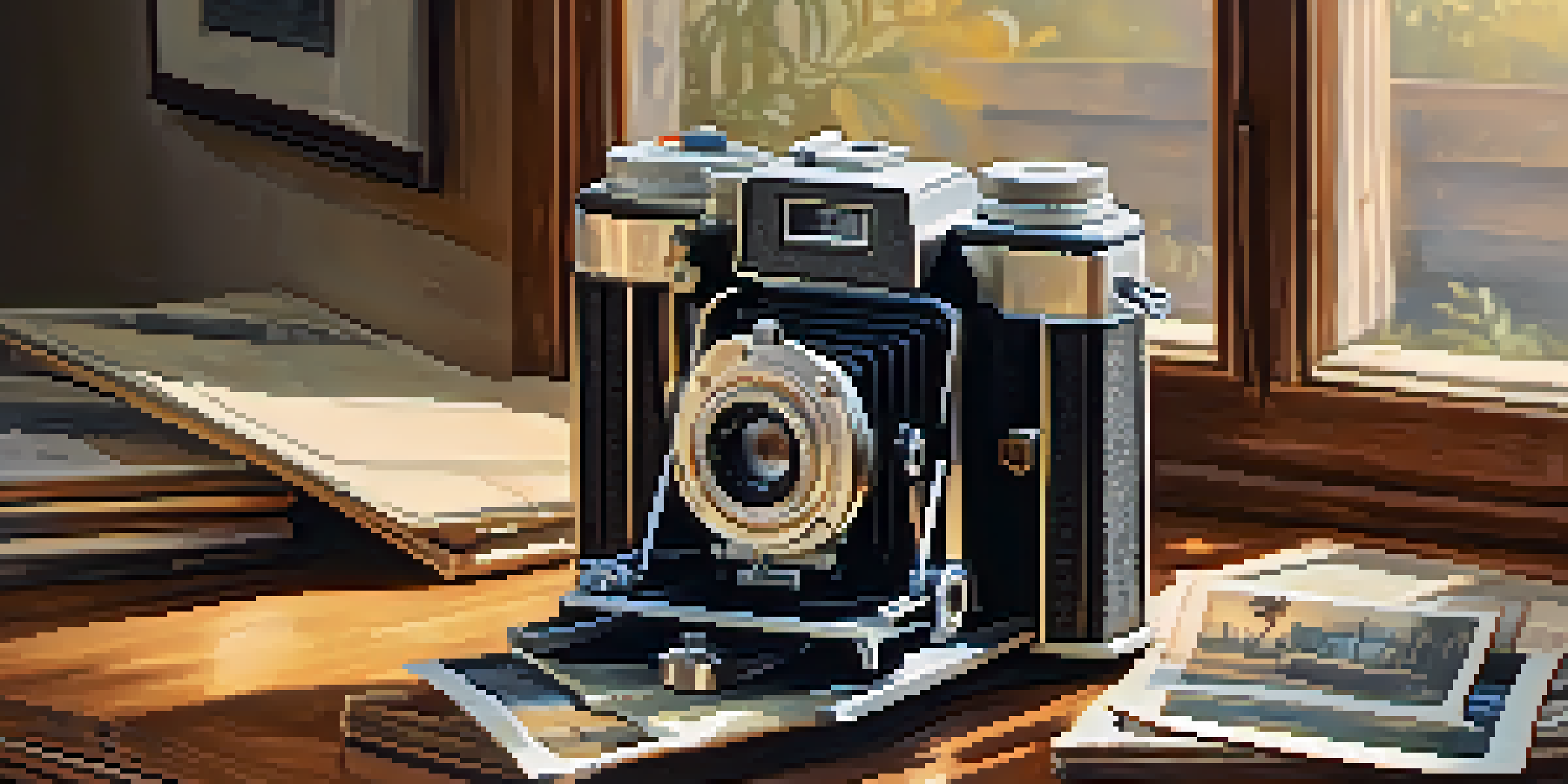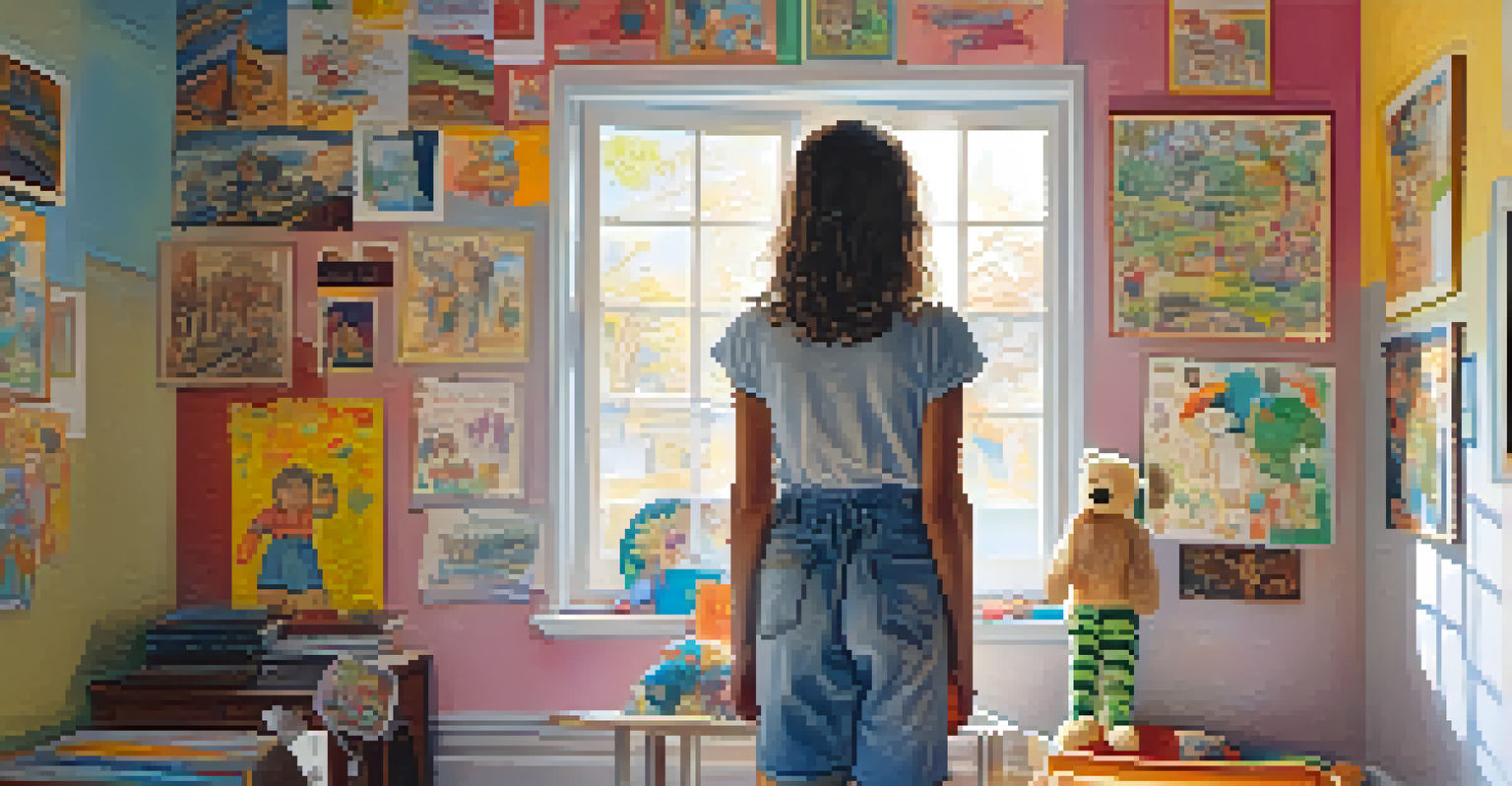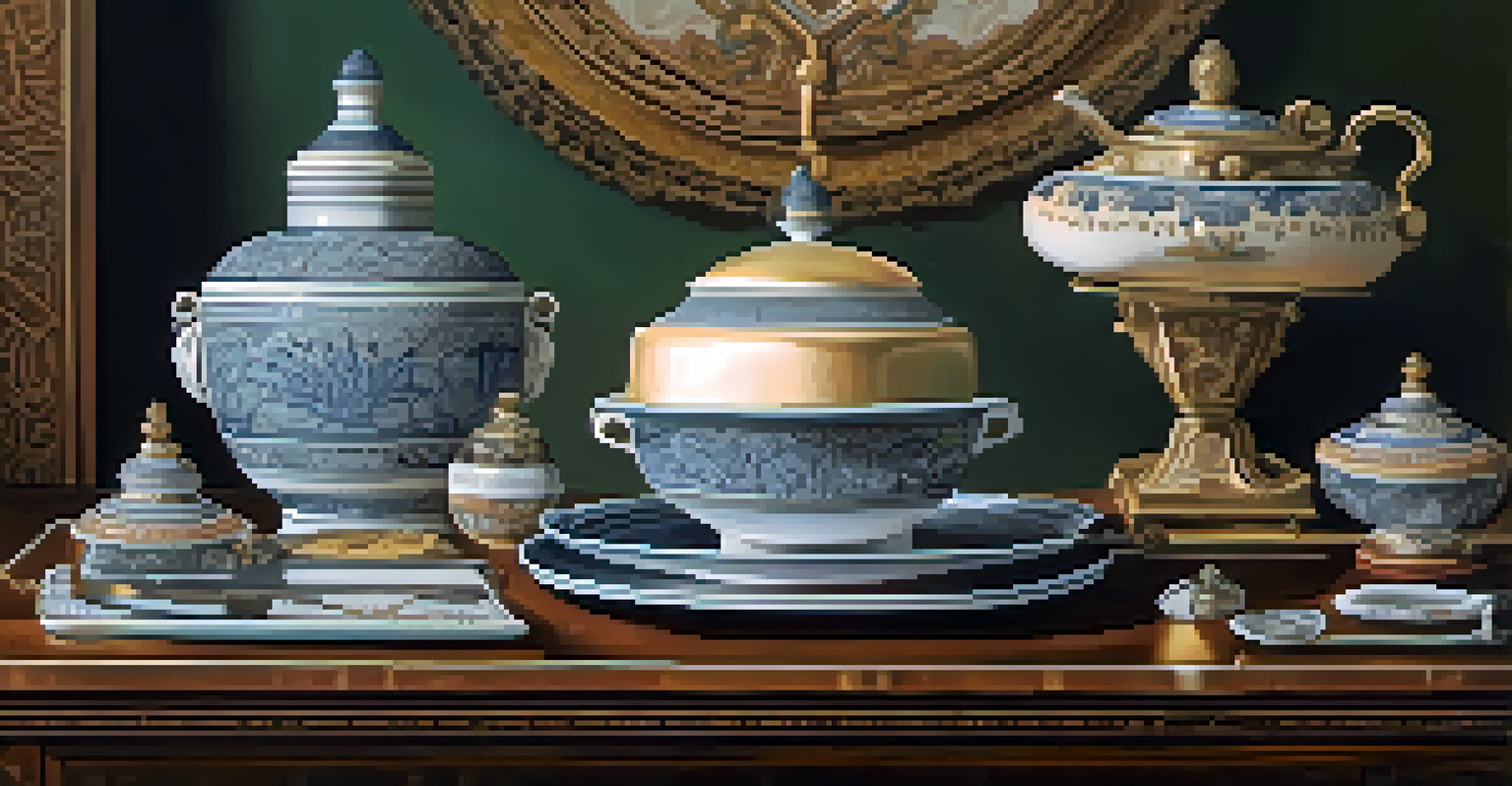Symbolism in Props: How Objects Shape Character Arcs

Understanding Symbolism in Props and Character Development
Symbolism in storytelling is a powerful tool that writers use to convey deeper meanings. Props, or objects used by characters, can represent their inner thoughts, struggles, and transformations. For example, a broken watch might symbolize a character's struggle with time, reflecting their inability to move on from the past.
Objects in a story often reflect the inner emotional landscape of the characters, becoming symbols that reveal their journeys and transformations.
When props are infused with symbolic meaning, they can significantly influence character arcs. A character's relationship with a specific object can reveal their emotional state and growth. For instance, a young adult's journey with a childhood teddy bear can illustrate their transition from innocence to maturity.
By examining the symbolism behind props, audiences gain insights into the characters' motivations and conflicts. This adds layers to the narrative, making it more engaging and relatable. In essence, props become a visual language that speaks to the audience about the character's journey.
The Role of Props in Establishing Character Identity
Props can serve as extensions of a character's identity, helping to define who they are. Consider a character who always carries a camera; this object not only reflects their passion for photography but also hints at their desire to capture life and memories. Through such objects, viewers can understand characters on a deeper level.

Moreover, the way characters interact with their props can reveal their personality traits. A meticulous character might keep a perfectly organized workspace, while a chaotic individual may thrive in clutter. These details contribute to the audience’s perception of the character’s identity.
Symbolism Enhances Character Depth
Props infused with symbolic meaning provide insights into a character's emotional state and growth.
Ultimately, props can help establish a character's uniqueness and relatability. When audiences see a character using a familiar object, it creates an instant connection, making the character feel more real and grounded in their world.
How Props Reflect Character Growth and Change
As characters evolve throughout a story, their relationship with props often changes as well. For instance, a character might start with a weapon that symbolizes their anger, but as they grow, they may replace it with a tool that signifies healing or creation. This shift beautifully illustrates their character arc.
The meaning of an object is not just in what it is, but in the context of how it interacts with the characters and the story.
These transformations in props serve as visual metaphors for internal changes. A character moving from a cluttered space filled with reminders of their past to a minimalist environment signifies emotional clarity and growth. Such imagery reinforces the narrative’s emotional impact.
By paying attention to how props evolve alongside characters, audiences can better appreciate the nuances of the story. These objects become markers of change, allowing viewers to track the character's journey and development throughout the narrative.
Using Color and Design in Props for Deeper Meaning
The color and design of props can add another layer of symbolism to character arcs. Bright colors might represent hope and positivity, while darker hues can signify despair or conflict. For example, a red dress might symbolize passion or danger, depending on the context of the character's journey.
Additionally, unique designs can reflect a character's personality or background. A vintage suitcase might indicate a character's nostalgia, while a sleek, modern briefcase might suggest ambition and professionalism. These visual cues enrich the storytelling experience.
Props Reflect Character Change
As characters evolve, their relationship with props often transforms, illustrating their personal journey.
By intentionally choosing colors and designs for props, creators can subtly guide audience interpretations of character development. This enhances emotional engagement, making viewers more invested in the characters' journeys.
The Importance of Context in Prop Symbolism
Context plays a crucial role in how props are perceived within a narrative. An object may carry different meanings depending on the character's situation or emotional state. For instance, a wedding ring can symbolize love and commitment, but in the context of a divorce, it might represent loss and regret.
Understanding the context allows audiences to appreciate the complexity of character relationships with their props. A simple object can evoke a range of emotions when viewed through the lens of the character's experiences and challenges.
Thus, creators must carefully consider the context surrounding props to ensure they resonate with the audience. This thoughtful approach to symbolism can enhance the overall impact of the character's arc.
Cultural Significance of Props in Storytelling
Props often carry cultural significance that can enrich character arcs and plots. For example, a character using a traditional family heirloom can highlight themes of heritage and legacy. This connection to culture can deepen the narrative, providing a backdrop for character development.
Different cultures may ascribe varying meanings to the same object, demonstrating how diverse perspectives shape storytelling. A sword may represent honor in one culture, while in another, it might symbolize violence. Understanding these nuances can enhance character arcs and plot dynamics.
Context Shapes Prop Interpretation
The meaning of a prop can shift dramatically based on the character's situation, adding complexity to the narrative.
By incorporating culturally significant props, storytellers can create more authentic and relatable narratives. This not only enhances character development but also broadens the audience's understanding of different cultures and experiences.
The Emotional Resonance of Props in Character Arcs
Props can evoke strong emotions, serving as catalysts for character change. An object linked to a pivotal moment—like a letter or a photograph—can spur characters to confront their past and make critical decisions. This emotional connection makes props vital to character growth.
When characters interact with emotionally charged props, it can create powerful, relatable moments for the audience. For instance, a character revisiting a childhood toy can trigger nostalgia, prompting viewers to reflect on their own experiences and emotions.

By fostering this emotional resonance, props become more than just objects; they transform into conduits for storytelling. This connection enhances the overall impact of character arcs, making them more memorable and compelling.